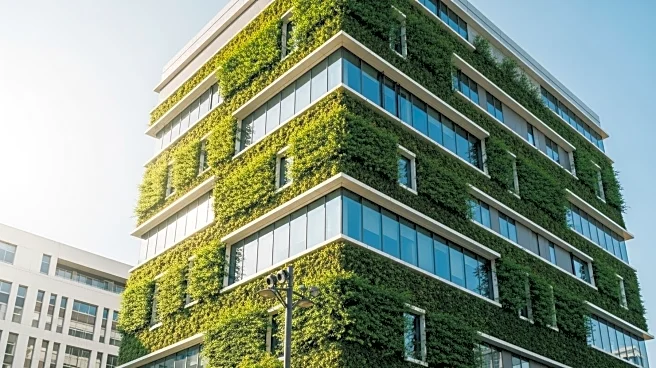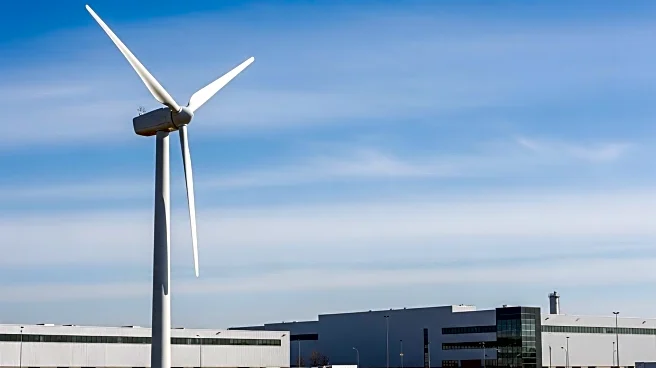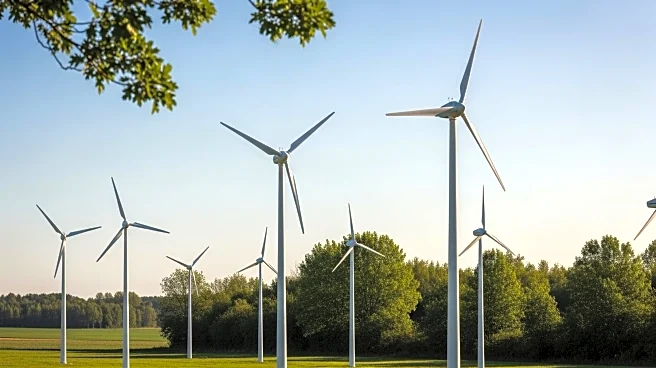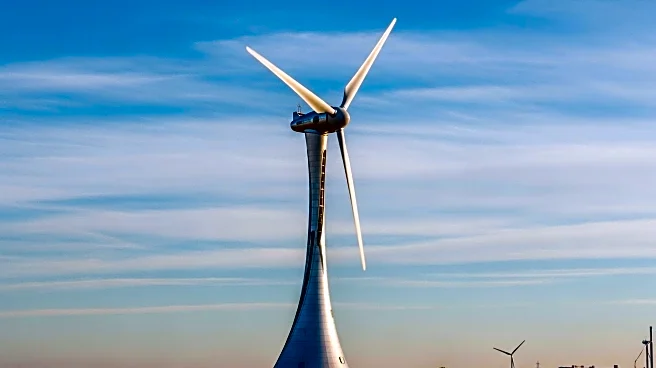What's Happening?
Spike Island, a creative hub located in Bristol, has been recognized for its exemplary environmental practices. The organization, housed in a historic tea packing factory, has undertaken significant steps to reduce its carbon footprint and improve energy efficiency. This includes the installation of solar panels, which have already saved 6000 kilograms of CO2 emissions, and plans for further upgrades such as heat pump systems and improved insulation. These efforts are part of a broader capital masterplan aimed at transitioning Spike Island to green energy sources. The organization has also embedded sustainability into its exhibitions and daily operations, emphasizing the use of low-impact materials and energy-conscious planning.
Why It's Important?
Spike Island's initiatives highlight the potential for arts organizations to align environmental sustainability with financial viability. By reducing energy costs and carbon emissions, the organization not only contributes to environmental conservation but also secures its financial future. This model serves as a blueprint for other institutions, demonstrating that sustainable practices can lead to economic benefits. The approach taken by Spike Island could inspire similar actions across the arts sector, promoting a culture of sustainability that extends beyond environmental impact to include economic and cultural dimensions.
What's Next?
Spike Island plans to continue its sustainability efforts with further infrastructure upgrades and community engagement initiatives. The organization aims to feed surplus renewable energy back into the national grid, enhancing its role as a leader in sustainable practices. Additionally, the expansion of its Green Team and community garden initiatives reflect a commitment to fostering an environmentally-aware culture. These steps are expected to solidify Spike Island's position as a model for sustainable arts organizations, potentially influencing policy and practice within the broader cultural sector.
Beyond the Headlines
The actions taken by Spike Island underscore the intersection of environmental responsibility and cultural leadership. By prioritizing sustainability, the organization not only addresses immediate environmental challenges but also sets a precedent for integrating ecological considerations into the arts. This approach may lead to long-term shifts in how cultural institutions operate, encouraging a more holistic view of sustainability that encompasses social, economic, and environmental factors.










